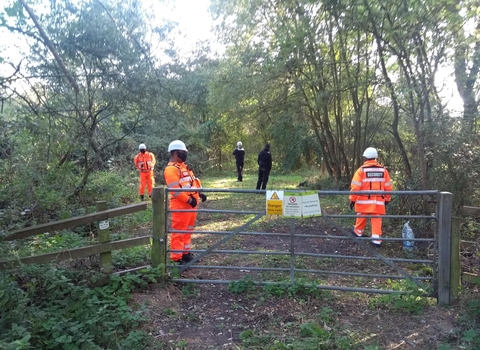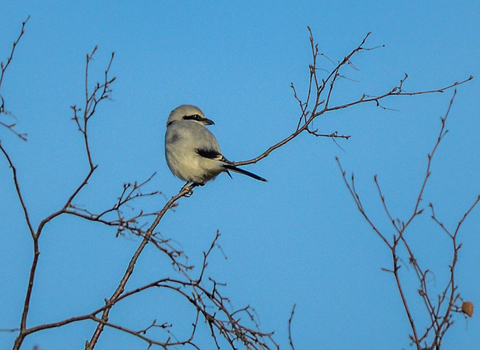Wild places at risk
Wildlife Trusts along the HS2 route are continuing to monitor the impact of works in their area as best they can, with the limitations and site restrictions in place for COVID-19. We continue to record concerns that have been raised with us, and to highlight examples of issues including breaches of formal assurances and breaches of license conditions at a number of sites near or at Wildlife Trust nature reserves.
In November 2021, the Government announced that it would scrap HS2 Phase 2b, or the 'eastern leg', meaning that some wild spaces to the north now face a welcome reprieve. Cancelling this northern section of the huge transport project will save vast swathes of natural wild places and spare the rare birds and carbon-storing habitats that were threatened. However, this only involves scrapping the creation of the new HS2 line to the north of the East Midlands Parkway in Nottinghamshire, and the new HS2 line proposed between Birmingham and the East Midlands Parkway will still go ahead. This section of HS2 Phase 2b cuts right through the Tame Valley Wetlands NIA in North Warwickshire, carving up Pooley Country Park and cutting straight across Kingsbury Water Park. These sites and the landscape they sit within are some of the most important wildlife habitats in the area and still at risk.
The proposed route for HS2 will still badly damage wild places along its route. Fourteen Wildlife Trusts have campaigned against the development which will devastate many of the wild places that they care for:
Phase 1: London; Hertfordshire & Middlesex; Berks, Bucks and Oxon; Beds, Cambs and Northants; Warwickshire; Birmingham and Black Country; and Staffordshire.
Phase 2: Staffordshire; Cheshire; Lancashire, Manchester and North Merseyside;

In late December 2019, contractors acting on behalf of HS2 Ltd began works without permission at Calvert Jubilee Nature Reserve. Image by Mark Vallance.
Calvert Jubilee, Buckinghamshire
In late December 2019, contractors acting on behalf of HS2 Ltd began works unexpectedly and without permission at Berkshire, Buckinghamshire and Oxfordshire Wildlife Trust’s Calvert Jubilee Nature Reserve. In September 2020, despite assurances that BBOWT would be notified, HS2 Ltd took over Calvert Jubilee site without prior warning.

Great grey shrike © Pete Richman
Jones Hill Wood, Buckinghamshire
HS2 works at this ancient woodland, famous for inspiring Roald Dahl, were apparently paused in October 2020 following the discovery that rare barbastelle bats may be present. Without the appropriate Natural England license in place, disturbing this species constitutes a wildlife crime. The Wildlife Trusts have backed a call for a pause in works by HS2 Ltd, while investigations into possible wildlife crimes can be carried out. On 8 November 2020 a statement of concerns highlighting possible illegal activity and the need for better transparency from HS2 Ltd was sent by independent ecologists, EcoTech, to Grant Shapps, the Secretary of State responsible for HS2. A joint statement of support from us, the RSPB, and Woodland Trust was included, urging the Secretary of State to listen to and act on those concerns raised.
Starting in September 2020, hundreds of trees have been felled in the two ancient woodlands of Little Lyntus and Fulfen woods. HS2 Ltd broke assurances that work was not to start before October 1st, 2020. Photo by Staffordshire Wildlife Trust.
Little Lyntus and Fulfen woods, Staffordshire
Starting in September 2020, hundreds of trees have been felled in the two ancient woodlands of Little Lyntus and Fulfen woods. Staffordshire Wildlife Trust has criticised HS2 Ltd for breaking assurances that work in Lichfield was not due to start before October 1st, 2020. Originally HS2 Ltd was given permission by Natural England to start felling in these woods in spring, a vital time for wildlife. After protests, work was delayed until autumn but still started earlier than planned.
Other sites affected by the route
Many more wild places along the HS2 route are facing damage and destruction, including sites cared for by The Wildlife Trusts. Read about some of these below.
